Economics Assignment: Marginal Analysis and Incentives
VerifiedAdded on 2022/08/26
|5
|999
|13
Homework Assignment
AI Summary
This economics assignment delves into the concept of marginal analysis, emphasizing its significance in economic decision-making. It uses the example of a company hiring laborers to illustrate how marginal analysis helps determine the optimal number of employees by comparing marginal benefits and costs. The assignment highlights how marginal thinking maximizes company utility within budget constraints. It also explores how individuals and companies respond to incentives, such as profit maximization, and how personal values, like those of a Christian, can influence decision-making preferences and responses to incentives. The assignment provides a practical application of economic principles and the impact of diverse viewpoints on economic choices.
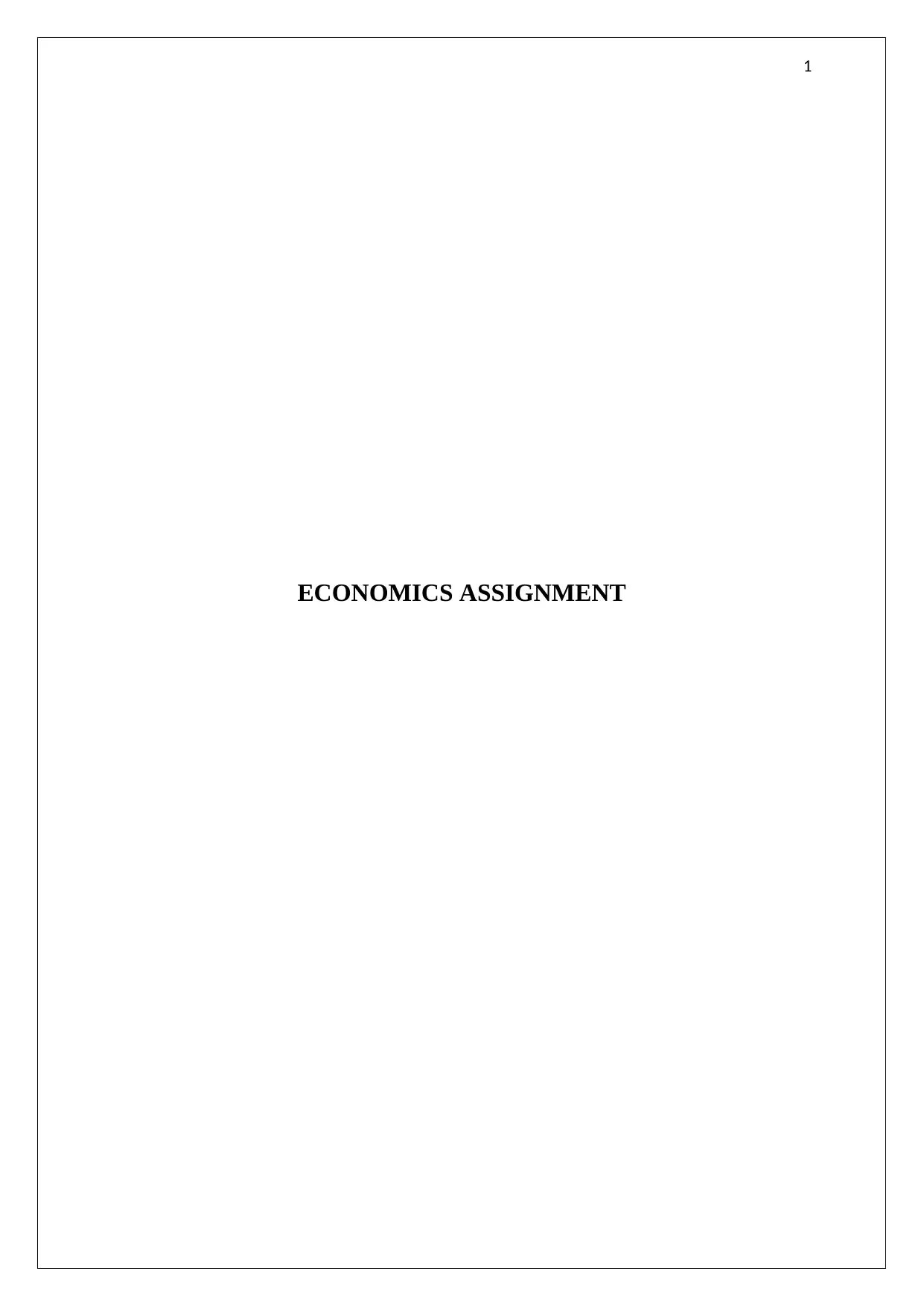
1
ECONOMICS ASSIGNMENT
ECONOMICS ASSIGNMENT
Paraphrase This Document
Need a fresh take? Get an instant paraphrase of this document with our AI Paraphraser
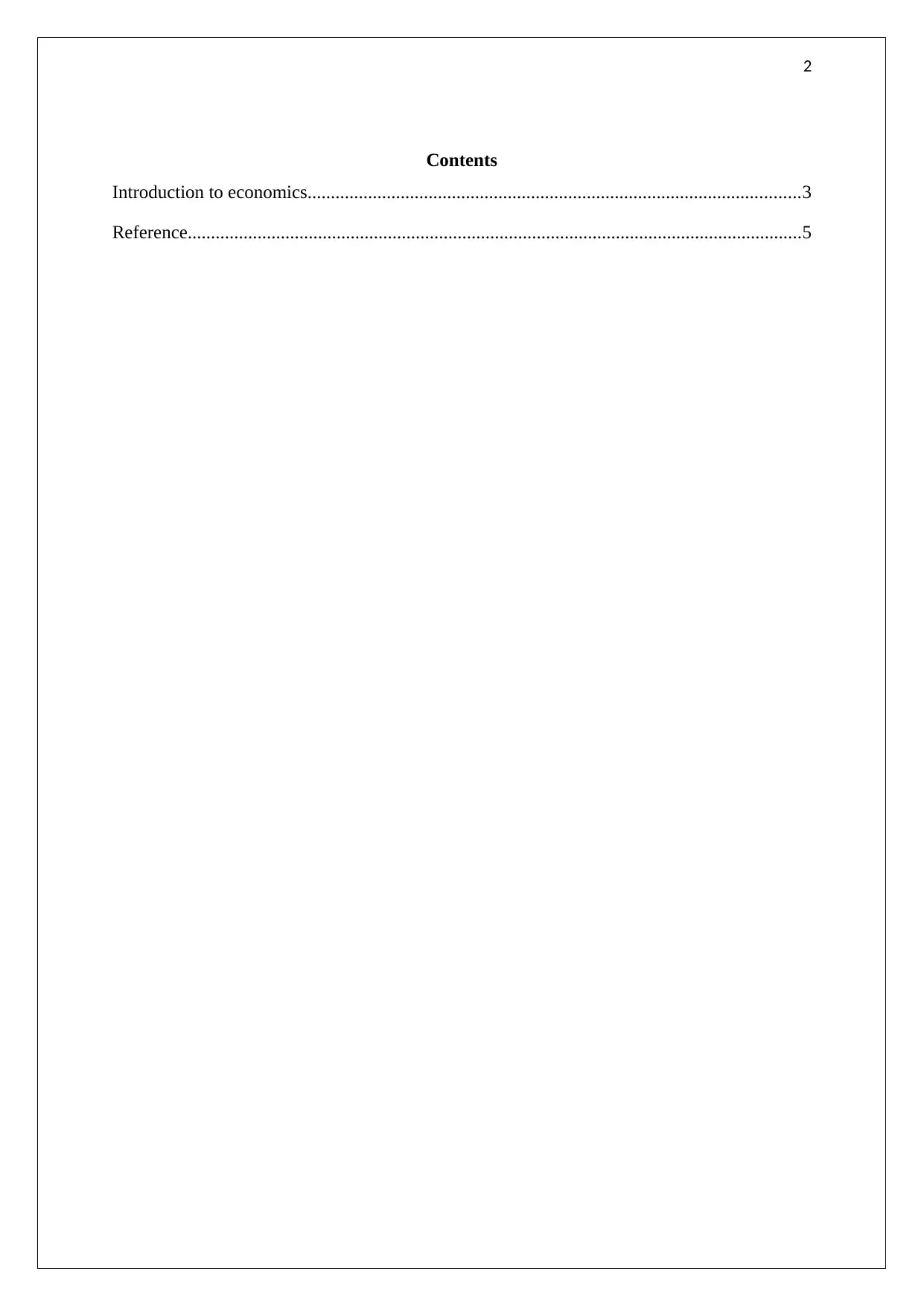
2
Contents
Introduction to economics..........................................................................................................3
Reference....................................................................................................................................5
Contents
Introduction to economics..........................................................................................................3
Reference....................................................................................................................................5
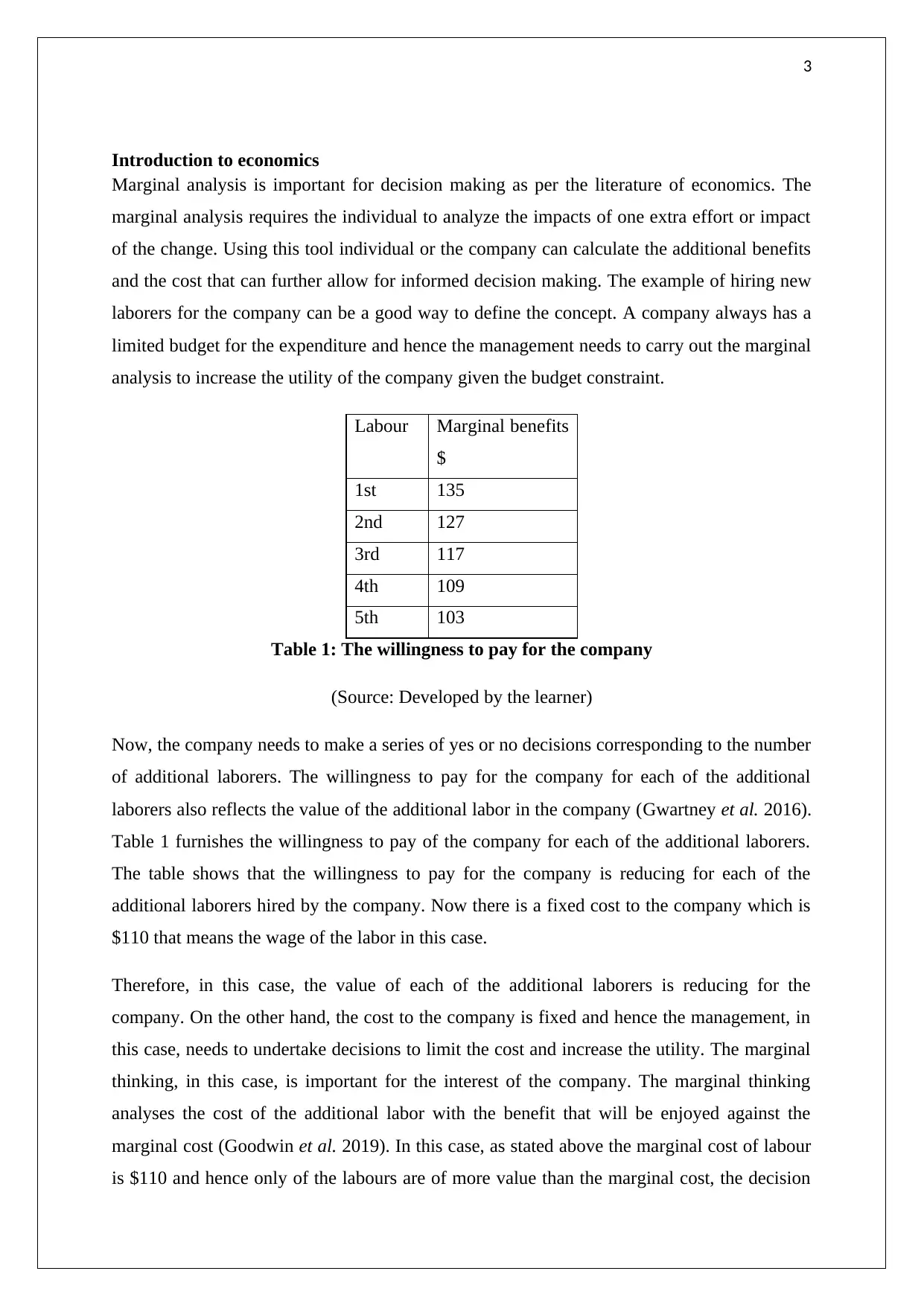
3
Introduction to economics
Marginal analysis is important for decision making as per the literature of economics. The
marginal analysis requires the individual to analyze the impacts of one extra effort or impact
of the change. Using this tool individual or the company can calculate the additional benefits
and the cost that can further allow for informed decision making. The example of hiring new
laborers for the company can be a good way to define the concept. A company always has a
limited budget for the expenditure and hence the management needs to carry out the marginal
analysis to increase the utility of the company given the budget constraint.
Labour Marginal benefits
$
1st 135
2nd 127
3rd 117
4th 109
5th 103
Table 1: The willingness to pay for the company
(Source: Developed by the learner)
Now, the company needs to make a series of yes or no decisions corresponding to the number
of additional laborers. The willingness to pay for the company for each of the additional
laborers also reflects the value of the additional labor in the company (Gwartney et al. 2016).
Table 1 furnishes the willingness to pay of the company for each of the additional laborers.
The table shows that the willingness to pay for the company is reducing for each of the
additional laborers hired by the company. Now there is a fixed cost to the company which is
$110 that means the wage of the labor in this case.
Therefore, in this case, the value of each of the additional laborers is reducing for the
company. On the other hand, the cost to the company is fixed and hence the management, in
this case, needs to undertake decisions to limit the cost and increase the utility. The marginal
thinking, in this case, is important for the interest of the company. The marginal thinking
analyses the cost of the additional labor with the benefit that will be enjoyed against the
marginal cost (Goodwin et al. 2019). In this case, as stated above the marginal cost of labour
is $110 and hence only of the labours are of more value than the marginal cost, the decision
Introduction to economics
Marginal analysis is important for decision making as per the literature of economics. The
marginal analysis requires the individual to analyze the impacts of one extra effort or impact
of the change. Using this tool individual or the company can calculate the additional benefits
and the cost that can further allow for informed decision making. The example of hiring new
laborers for the company can be a good way to define the concept. A company always has a
limited budget for the expenditure and hence the management needs to carry out the marginal
analysis to increase the utility of the company given the budget constraint.
Labour Marginal benefits
$
1st 135
2nd 127
3rd 117
4th 109
5th 103
Table 1: The willingness to pay for the company
(Source: Developed by the learner)
Now, the company needs to make a series of yes or no decisions corresponding to the number
of additional laborers. The willingness to pay for the company for each of the additional
laborers also reflects the value of the additional labor in the company (Gwartney et al. 2016).
Table 1 furnishes the willingness to pay of the company for each of the additional laborers.
The table shows that the willingness to pay for the company is reducing for each of the
additional laborers hired by the company. Now there is a fixed cost to the company which is
$110 that means the wage of the labor in this case.
Therefore, in this case, the value of each of the additional laborers is reducing for the
company. On the other hand, the cost to the company is fixed and hence the management, in
this case, needs to undertake decisions to limit the cost and increase the utility. The marginal
thinking, in this case, is important for the interest of the company. The marginal thinking
analyses the cost of the additional labor with the benefit that will be enjoyed against the
marginal cost (Goodwin et al. 2019). In this case, as stated above the marginal cost of labour
is $110 and hence only of the labours are of more value than the marginal cost, the decision
⊘ This is a preview!⊘
Do you want full access?
Subscribe today to unlock all pages.

Trusted by 1+ million students worldwide
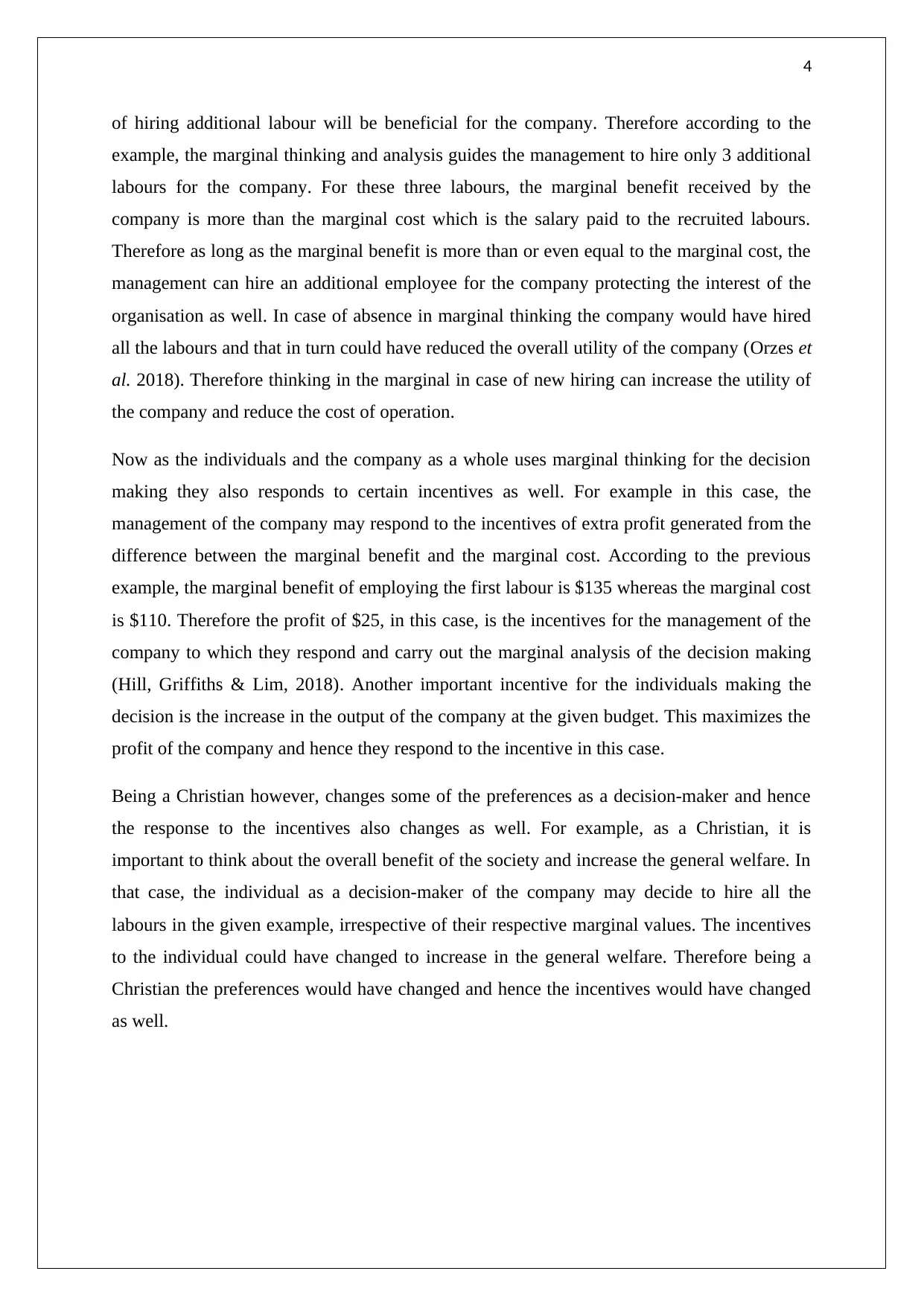
4
of hiring additional labour will be beneficial for the company. Therefore according to the
example, the marginal thinking and analysis guides the management to hire only 3 additional
labours for the company. For these three labours, the marginal benefit received by the
company is more than the marginal cost which is the salary paid to the recruited labours.
Therefore as long as the marginal benefit is more than or even equal to the marginal cost, the
management can hire an additional employee for the company protecting the interest of the
organisation as well. In case of absence in marginal thinking the company would have hired
all the labours and that in turn could have reduced the overall utility of the company (Orzes et
al. 2018). Therefore thinking in the marginal in case of new hiring can increase the utility of
the company and reduce the cost of operation.
Now as the individuals and the company as a whole uses marginal thinking for the decision
making they also responds to certain incentives as well. For example in this case, the
management of the company may respond to the incentives of extra profit generated from the
difference between the marginal benefit and the marginal cost. According to the previous
example, the marginal benefit of employing the first labour is $135 whereas the marginal cost
is $110. Therefore the profit of $25, in this case, is the incentives for the management of the
company to which they respond and carry out the marginal analysis of the decision making
(Hill, Griffiths & Lim, 2018). Another important incentive for the individuals making the
decision is the increase in the output of the company at the given budget. This maximizes the
profit of the company and hence they respond to the incentive in this case.
Being a Christian however, changes some of the preferences as a decision-maker and hence
the response to the incentives also changes as well. For example, as a Christian, it is
important to think about the overall benefit of the society and increase the general welfare. In
that case, the individual as a decision-maker of the company may decide to hire all the
labours in the given example, irrespective of their respective marginal values. The incentives
to the individual could have changed to increase in the general welfare. Therefore being a
Christian the preferences would have changed and hence the incentives would have changed
as well.
of hiring additional labour will be beneficial for the company. Therefore according to the
example, the marginal thinking and analysis guides the management to hire only 3 additional
labours for the company. For these three labours, the marginal benefit received by the
company is more than the marginal cost which is the salary paid to the recruited labours.
Therefore as long as the marginal benefit is more than or even equal to the marginal cost, the
management can hire an additional employee for the company protecting the interest of the
organisation as well. In case of absence in marginal thinking the company would have hired
all the labours and that in turn could have reduced the overall utility of the company (Orzes et
al. 2018). Therefore thinking in the marginal in case of new hiring can increase the utility of
the company and reduce the cost of operation.
Now as the individuals and the company as a whole uses marginal thinking for the decision
making they also responds to certain incentives as well. For example in this case, the
management of the company may respond to the incentives of extra profit generated from the
difference between the marginal benefit and the marginal cost. According to the previous
example, the marginal benefit of employing the first labour is $135 whereas the marginal cost
is $110. Therefore the profit of $25, in this case, is the incentives for the management of the
company to which they respond and carry out the marginal analysis of the decision making
(Hill, Griffiths & Lim, 2018). Another important incentive for the individuals making the
decision is the increase in the output of the company at the given budget. This maximizes the
profit of the company and hence they respond to the incentive in this case.
Being a Christian however, changes some of the preferences as a decision-maker and hence
the response to the incentives also changes as well. For example, as a Christian, it is
important to think about the overall benefit of the society and increase the general welfare. In
that case, the individual as a decision-maker of the company may decide to hire all the
labours in the given example, irrespective of their respective marginal values. The incentives
to the individual could have changed to increase in the general welfare. Therefore being a
Christian the preferences would have changed and hence the incentives would have changed
as well.
Paraphrase This Document
Need a fresh take? Get an instant paraphrase of this document with our AI Paraphraser
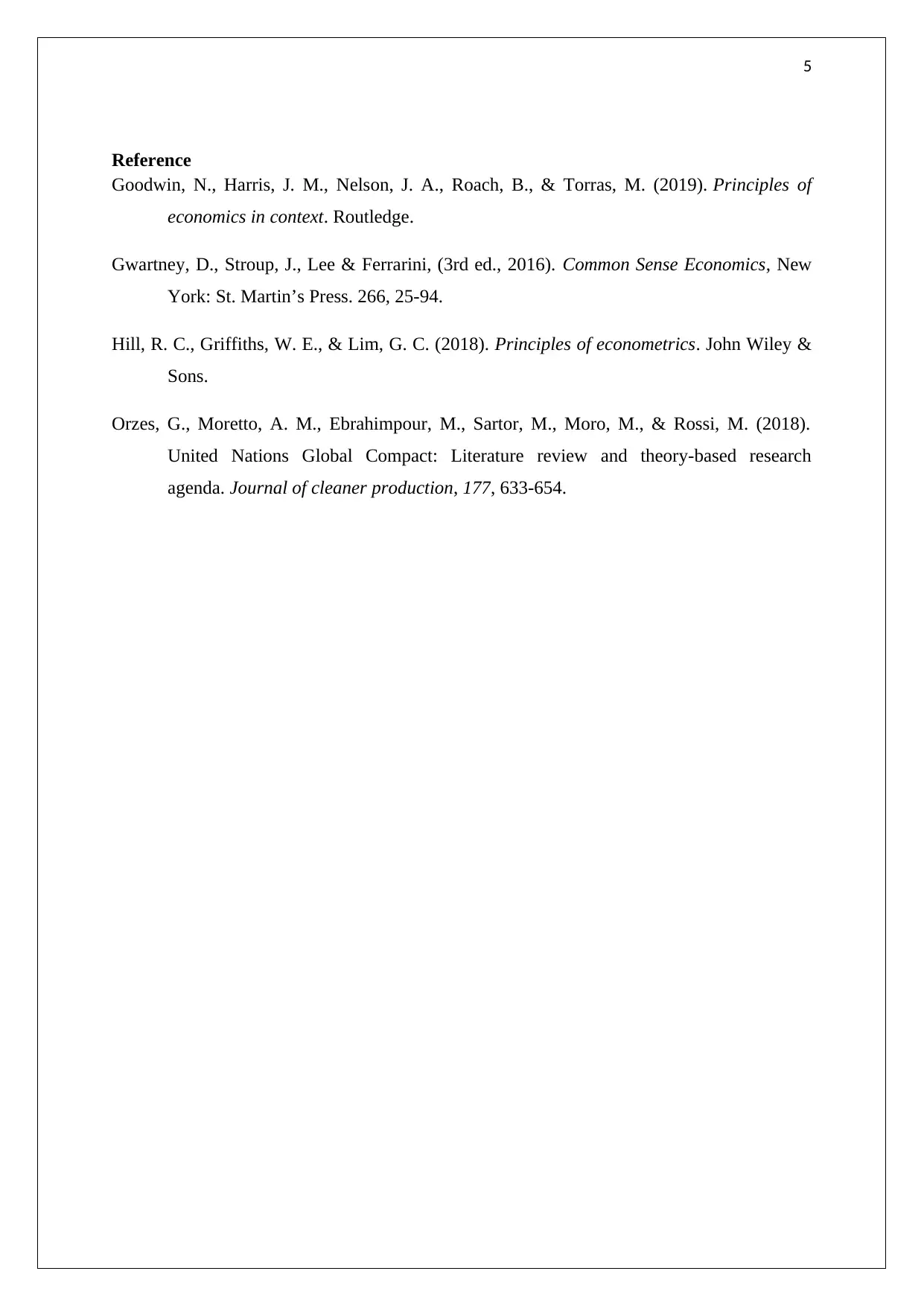
5
Reference
Goodwin, N., Harris, J. M., Nelson, J. A., Roach, B., & Torras, M. (2019). Principles of
economics in context. Routledge.
Gwartney, D., Stroup, J., Lee & Ferrarini, (3rd ed., 2016). Common Sense Economics, New
York: St. Martin’s Press. 266, 25-94.
Hill, R. C., Griffiths, W. E., & Lim, G. C. (2018). Principles of econometrics. John Wiley &
Sons.
Orzes, G., Moretto, A. M., Ebrahimpour, M., Sartor, M., Moro, M., & Rossi, M. (2018).
United Nations Global Compact: Literature review and theory-based research
agenda. Journal of cleaner production, 177, 633-654.
Reference
Goodwin, N., Harris, J. M., Nelson, J. A., Roach, B., & Torras, M. (2019). Principles of
economics in context. Routledge.
Gwartney, D., Stroup, J., Lee & Ferrarini, (3rd ed., 2016). Common Sense Economics, New
York: St. Martin’s Press. 266, 25-94.
Hill, R. C., Griffiths, W. E., & Lim, G. C. (2018). Principles of econometrics. John Wiley &
Sons.
Orzes, G., Moretto, A. M., Ebrahimpour, M., Sartor, M., Moro, M., & Rossi, M. (2018).
United Nations Global Compact: Literature review and theory-based research
agenda. Journal of cleaner production, 177, 633-654.
1 out of 5
Related Documents
Your All-in-One AI-Powered Toolkit for Academic Success.
+13062052269
info@desklib.com
Available 24*7 on WhatsApp / Email
![[object Object]](/_next/static/media/star-bottom.7253800d.svg)
Unlock your academic potential
Copyright © 2020–2025 A2Z Services. All Rights Reserved. Developed and managed by ZUCOL.





